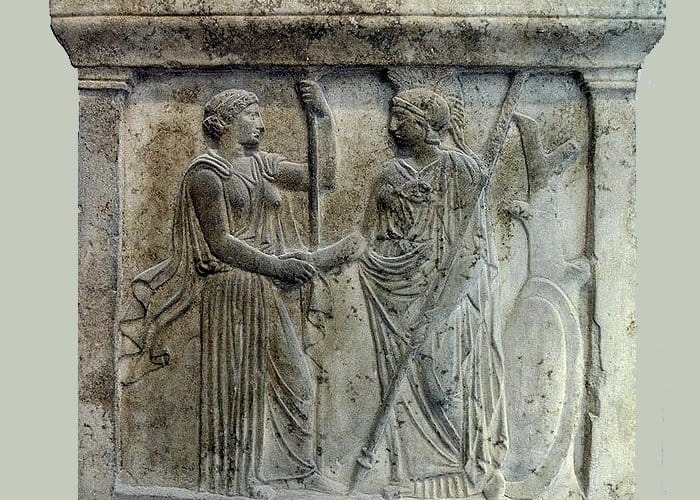The origins of the handshake can be traced back to the 5th century B.C. in Ancient Greece, where it served as a symbolic gesture of peace, indicating the absence of concealed weapons.
Archaeological relics, including a funeral monument at Berlin's Pergamon Museum and a stone slab depicting Hera and Athena, offer tangible evidence of handshakes being practised during this era. In classics like The Odyssey and The Iliad, the Greek poet Homer frequently mentions handshakes as demonstrations of trust.
On opposing sides in the Trojan War, the two men realise they have a mutual bond through their grandfathers. They exchange armour and 'clasped each other's hands as a pledge of their good faith'.
During the Roman period, the handshake evolved into more of an arm grab, and in Medieval Europe, knights may have added the up-and-down shaking motion as a precaution against concealed weapons.
In the 17th century, Quakers popularized the modern-day handshake, considering it more egalitarian than other forms of greeting. Some 17th-century marriage portraits even depict couples shaking hands as a symbol of their legally binding engagement.
Etiquette manuals from the Victorian era emphasized the importance of a firm handshake, a preference still prevalent in many English-first and Scandinavian nations. However, it's worth noting that an overly firm grip is considered rude and aggressive in some cultures, while a gentler touch is favoured in certain Asian nations. In East Asia, particularly Japan, bowing remains the preferred gesture to convey respect, and handshakes are uncommon.
Contrastingly, the high five, a more recent phenomenon than the ancient tradition of handshaking, originated in the 20th century. Emerging during the Jazz Era in African American culture, the low five became a symbol of camaraderie, evolving from the expression "slap me some skin." Even in the 1927 film The Jazz Singer, Al Jolson is seen engaging in low fives to celebrate a successful Broadway audition, marking the early days of this lively and dynamic greeting.


